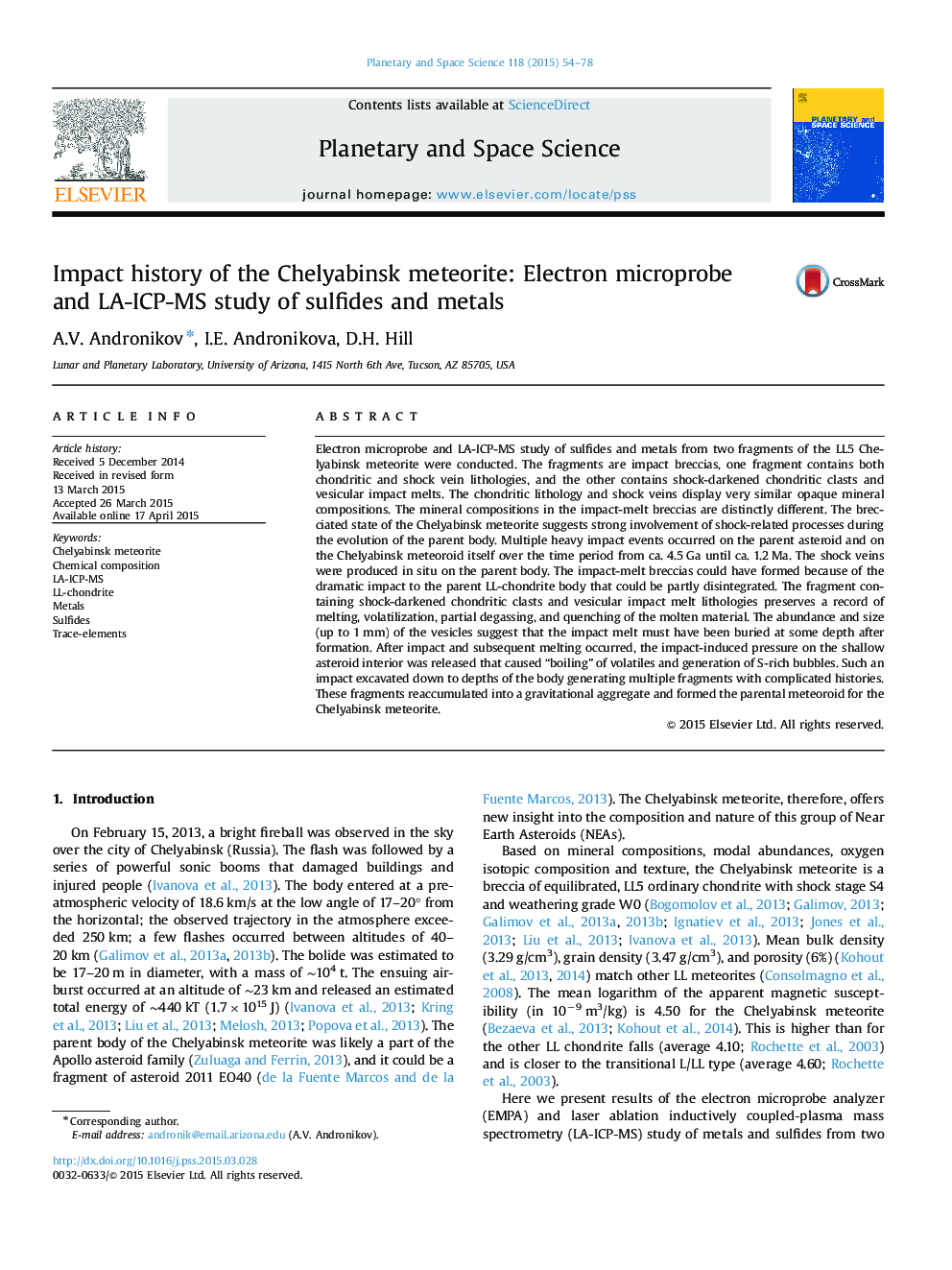| کد مقاله | کد نشریه | سال انتشار | مقاله انگلیسی | نسخه تمام متن |
|---|---|---|---|---|
| 1780895 | 1523922 | 2015 | 25 صفحه PDF | دانلود رایگان |

The Chelyabinsk meteorite represents an impact breccia.Impacts excavated down to depths of the parent body.The light lithology and shock veins display similar opaque mineral compositions.The impact-melt lithology display different opaque mineral compositions.Vesicles in the impact-melt lithology are formed by S vapor.
Electron microprobe and LA-ICP-MS study of sulfides and metals from two fragments of the LL5 Chelyabinsk meteorite were conducted. The fragments are impact breccias, one fragment contains both chondritic and shock vein lithologies, and the other contains shock-darkened chondritic clasts and vesicular impact melts. The chondritic lithology and shock veins display very similar opaque mineral compositions. The mineral compositions in the impact-melt breccias are distinctly different. The brecciated state of the Chelyabinsk meteorite suggests strong involvement of shock-related processes during the evolution of the parent body. Multiple heavy impact events occurred on the parent asteroid and on the Chelyabinsk meteoroid itself over the time period from ca. 4.5 Ga until ca. 1.2 Ma. The shock veins were produced in situ on the parent body. The impact-melt breccias could have formed because of the dramatic impact to the parent LL-chondrite body that could be partly disintegrated. The fragment containing shock-darkened chondritic clasts and vesicular impact melt lithologies preserves a record of melting, volatilization, partial degassing, and quenching of the molten material. The abundance and size (up to 1 mm) of the vesicles suggest that the impact melt must have been buried at some depth after formation. After impact and subsequent melting occurred, the impact-induced pressure on the shallow asteroid interior was released that caused “boiling” of volatiles and generation of S-rich bubbles. Such an impact excavated down to depths of the body generating multiple fragments with complicated histories. These fragments reaccumulated into a gravitational aggregate and formed the parental meteoroid for the Chelyabinsk meteorite.
Journal: Planetary and Space Science - Volume 118, 1 December 2015, Pages 54–78